Richard A. Harvey, Denise R. Ferrier
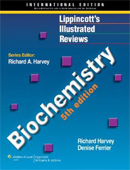
|
Call no. QP514.2 H341L 2011
Book Description E-Book Thoroughly updated for its Fifth Edition, Lippincott’s Illustrated Reviews: Biochemistry enables students to quickly review and assimilate large amounts of complex information by utilizing powerful visual resources that deliver the focus and clarification needed to master difficult biochemical concepts. Its signature outline format, full-color illustrations, end-of-chapter summaries, and USMLE-style review questions make it one of the most user-friendly books in the field. New features include case studies for each chapter and expanded coverage of molecular biology. A companion website offers fully searchable online text and additional USMLE-style questions for students and an image bank for faculty.
|
Green, Sharon
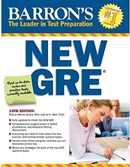
|
Call no. PE1128 G798B 2009
Book Description The GRE Graduate Record Exam is changing substantially starting in August 2011, and Barron’s is now ready with a thoroughly revised test prep manual that reflects the new exam’s content. Although the GRE’s Analytical Writing section remains essentially unchanged, new question types appear in both the GRE’s Verbal Reasoning and Quantitative Reasoning sections, and the model tests in Barron’s brand-new 19th edition reflect these changes:
Barron’s new GRE manual offers intensive practice and review for all question types plus a diagnostic test and two full-length model GREs with answer keys and explanations for all questions answered. The authors also present a test overview and valuable chapters on test-taking tactics. |
Maitland, Laura Lincoln
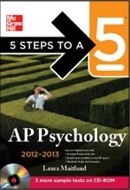
|
Call no. BF78 M232A 2011
Book Description This title presents a perfect plan for the perfect score. We want you to succeed on your AP* exam. That’s why we’ve created this 5-step plan to help you study more effectively, use your preparation time wisely, and get your best score. This easy-to-follow guide offers you a complete review of your AP course, strategies to give you the edge on test day, and plenty of practice with AP-style test questions. You’ll sharpen your subject knowledge, strengthen your thinking skills, and build your test-taking confidence with: full-length practice exams modeled on the real test 3 interactive practice exams on CD-ROM; all the terms and concepts you need to know to get your best score; and, your choice of three customized study schedules – so you can pick the one that meets your needs. The 5-Step Plan helps you get the most out of your study time: Step 1 – Set Up Your Study Program; Step 2 – Determine Your Readiness; Step 3 – Develop the Strategies; Step 4 – Review the Knowledge; and, Step 5 – Build Your Confidence. Topics include: History and Approaches; Research Methods; Biological Bases of Behavior; Sensation and Perception; States of Consciousness; Learning; Cognition; Motivation and Emotion; Developmental Psychology; Personality; Testing and Individual Differences; Abnormal Psychology; Treatment of Psychological Disorders; and, Social Psychology.
|
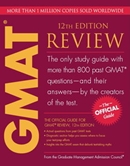
|
Call no. HF1118 O32 2009
Book Description The only study guide with 800 real GMAT? questions?and their answers-by the creators of the test.In addition to the questions and answers, this guide features:* NEW diagnostic section that helps you assess where to focus your test-prep efforts* NEW organization of questions in order of difficulty to save you study time* a comprehensive math review covering the topics tested on the GMAT? exam (arithmetic, algebra, geometry, and word problems)* approximately 270 Analytical Writing Assessment topicsThe Official Guide for GMAT? Review, 11th Edition contains 800 retired GMAT? questions, with thorough explanations. Answering questions that have appeared on the GMAT? exam before will give you experience with the types of questions that appear on the test. This Guide will help you learn what you need to know to answer the questions correctly.
|
Penny Le Couteur, Jay Burreson.
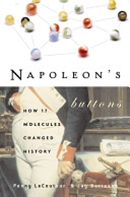
|
Call no. QD37 C871N 2004
Book Description Napoleon’s Buttons is the fascinating account of seventeen groups of molecules that have greatly influenced the course of history. These molecules provided the impetus for early exploration, and made possible the voyages of discovery that ensued. The molecules resulted in grand feats of engineering and spurred advances in medicine and law; they determined what we now eat, drink, and wear. A change as small as the position of an atom can lead to enormous alterations in the properties of a substance-which, in turn, can result in great historical shifts. With lively prose and an eye for colorful and unusual details, Le Couteur and Burreson offer a novel way to understand the shaping of civilization and the workings of our contemporary world.
|
Graham L. Patrick
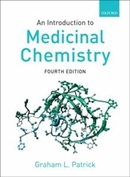
|
Call no. RS403 P314I 2009
Book Description The average person in the UK will take more than 14,000 pills over the course of their life, yet few people consider the long road of development that has made that drug work without being toxic. An Introduction to Medicinal Chemistry presents the field in an engaging style that is very accessible to students.
Medicinal chemistry is a fast-moving field whose continuous new developments have far-reaching implications for world health. As such, this text presents a complete course in medicinal chemistry, from first principles of drug action, to design and development, to specific drugs from HIV inhibitors to painkillers. The book builds on the history of drug development, but does not assume much background knowledge. The focus is on building upon the understandings of the molecular function of drugs, and from there, taking a broad overview of the topical issues and most frequently used techniques. An Introduction to Medicinal Chemistry remains a leading text for the growing number of medicinal chemistry courses internationally, especially as modules in medical chemistry become a more popular option on chemistry courses. With enhanced attention to the pedagogical details such as key points and boxes, as well as having specific case studies highlighted in distinct sections, Patrick’s new edition enables a full understanding of the subject and a clear idea of where the field is heading. |
Peter Lydyard, Alex Whelan, Michael Fanger
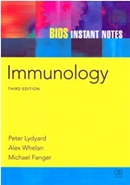
|
Call no. QR182.55 L983I 2011
Book Description Immunology, Third Edition, is the perfect text for undergraduates looking for a concise introduction to the subject, or a study guide to use before examinations. Each topic begins with a summary of essential facts-an ideal revision checklist-followed by a description of the subject that focuses on core information, with clear, simple diagrams that are easy for students to understand and recall in essays and exams.
|
